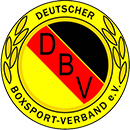The effect of cooling tubing intervention on recovery in elite wrestler competition simulation
(Die Auswirkung von Interventionen zur Kühlung auf die Wiederherstellung von Spitzenringern bei einem simulierten Wettkampf)
PURPOSE: The purpose of this study was to provide a scientific basis for physiological recovery of cooling tubing intervention during simulated match in elite male wrestlers.
METHODS: Fourteen national wrestler were divided Cooling Tubing Group (CTG, n=7) and Non Cooling Group (NCG, n=7). The simulated match was conducted at 3 minutes 1 round, 1 minute rest, 3 minutes 2 rounds, and was performed according to each weight class. At the end of the match, CTG cooled the face, chest, elbow, and thigh by cooling mask, vest, and tubing, and then took a rest. NCG took a rest without any special treatment. To compare and analyze the changes of the two groups, measured the variables at rest, immediately after the simulation, 10 minutes, and 30 minutes.
RESULTS: There was no interaction effect between CTG and NCG intervention. However, the skin temperature (p<.001), the chest skin temperature (p<.01), the RPE (p<.001), blood lactate (p<.001), and heart rate (p<.001) was a significant difference between the time of measurements, in each group. In addition, CTG showed no significant difference compared to NCG, but most of the variables (HR, RPE, skin temperature, DHEA, and cortisol) showed a tendency to show effects.
CONCLUSIONS: In conclusion, there was no significant difference between the groups. However, CTG showed a decrease in skin temperature, RPE, and fatigue-related hormone compared with NCG, confirmed the possibility that cooling-tubing treatment could have a positive effect on fatigue recovery.
© Copyright 2019 Exercise Science. The Korean Society of Exercise Physiology. Alle Rechte vorbehalten.
| Schlagworte: | Kampfsport Ringen Belastung Wettkampf Wiederherstellung Therapie Temperatur Thermoregulation Körper Hormon Hilfsgerät |
|---|---|
| Notationen: | Biowissenschaften und Sportmedizin Kampfsportarten |
| Tagging: | Kühlung |
| Veröffentlicht in: | Exercise Science |
| Veröffentlicht: |
2019
|
| Jahrgang: | 28 |
| Heft: | 3 |
| Seiten: | 221-231 |
| Dokumentenarten: | Artikel |
| Sprache: | Englisch |
| Level: | hoch |
